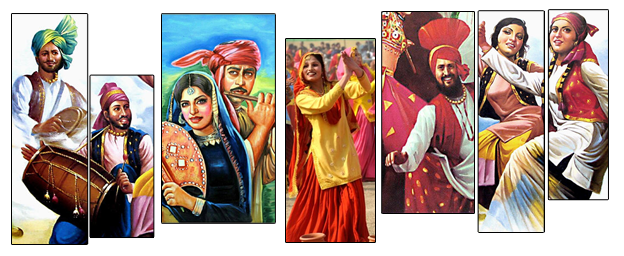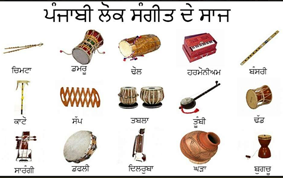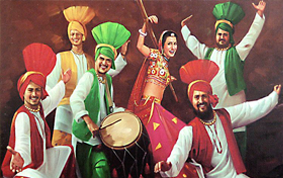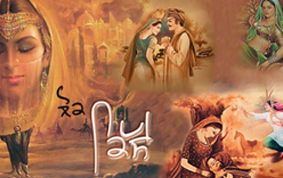ਲੋਕ ਗੀਤ (Folk Songs)
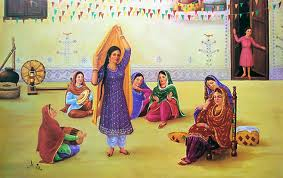
'ਲੋਕ/People' is a word that has been used in various ways in the past, often to refer to illiterate, uneducated, and uncultured people. However, this perception has changed today. According to folklore experts, the term 'lok' is used to refer to a group of people associated with a particular language. This group includes people from different generations, religions, castes, and occupations. It includes both illiterate and educated individuals. It can be rural, urban, ancient, or contemporary. Just as people from different backgrounds and religions are associated with a language, similarly, with folk culture, all these groups are connected. In Punjabi folk music, which is a significant part of Punjabi culture, Lok Geet plays a vital role. These songs showcase the essence of Punjabi culture and highlight various aspects of rural life. The significant themes in these songs include storytelling, folktales, and poetic verses. Folk songs encompass the eating and drinking habits, clothing, customs, traditions, jewelry, love, politics, and spiritual experiences, which are all part of the cultural fabric. Lok Geet becomes a topic of discussion within Punjabi culture and is popular among families, communities, and weddings. It brings together various genres of songs such as 'Tappe,' 'Mahiye,' 'Sithniaan,' 'Boliyan,' and a wide range of vocal expressions. For example, the song "Kudiyan Ne Paind Boliyan, Chor Loot Ke Duriyan" depicts the traditional way of celebrating weddings. Another song, "Keeti Jaandi Yaari, Mohe Varge Jaande Ne," celebrates the sweetness of friendship and relationships. "Kisaani Billan Virodhi, Do Kile Ton Hoyi Jung" is a folk song that acts as a promoter of the farmer's movement and significant issues. Punjabi Lok Geet is an invaluable part of Punjabi heritage, which shares Punjabi art and traditions. These songs create a powerful impact through the combination of music, lyrics, rhythm, and emotions. Punjabi Lok Geet showcases the rich and centuries-old heritage of Punjab.

